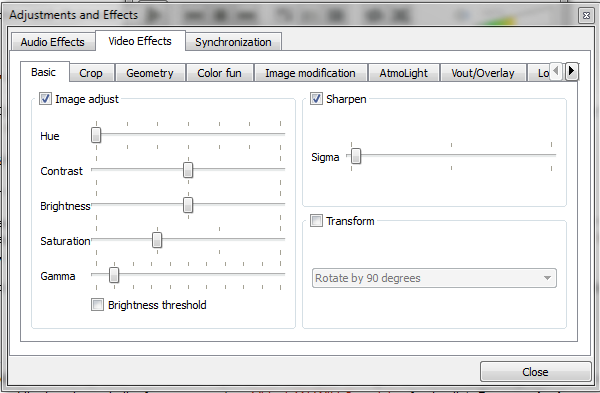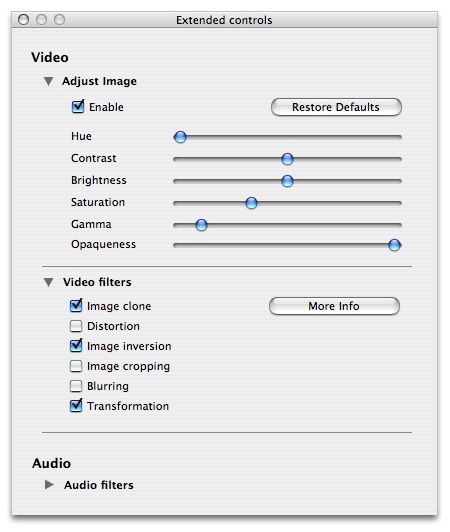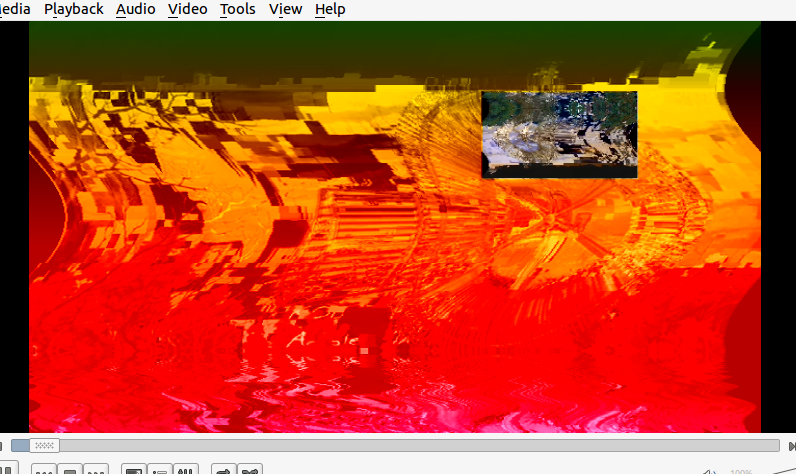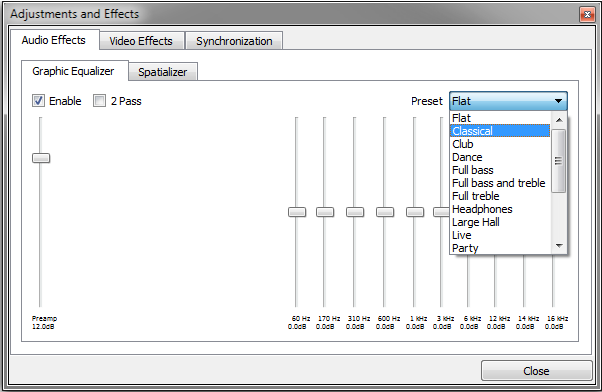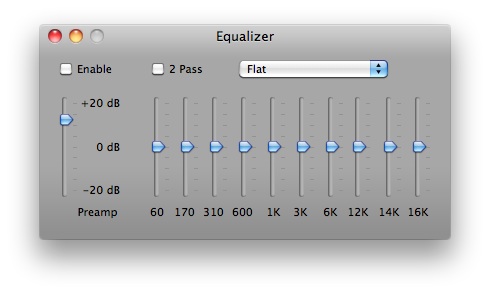Documentation:Video and Audio Filters
VLC includes a system of filters that allow you to modify the audio and video.
Contents
Deinterlacement and Post Processing
VLC is able to deinterlace a video stream using different deinterlacement methods. Deinterlacement can be enabled in the Video menu, Deinterlacement menu item. The Blend methods gives the best results in most cases. The discard method is a less resource consuming alternative, although its results may be slightly compromised.
On some particular streams (MPEG 4, DIVX, XVID, Sorenson, etc.), some additional image filtering can be applied to the video before display, improving its quality in some cases. This can be enabled by using the Post processing menu item in Video. Different levels of post processing can be chosen here. A higher level means more filtering.
Video filters
VLC features several filters able to change the video (distortion, brightness adjustment, motion blurring, etc.).
In Windows and Linux, the user must go to the Effects and Filters in the Tools menu item.
In Mac OS X you can enable these filters through the Extended Controls panel. Click on the triangle next to Video filters to select your filters or expand the Adjust Image section to change the contrast, hue, etc.
Example of combined effects on a video:
Audio filters
Equalizer
VLC features a 10-band graphical equalizer. You can display it by activating the advanced GUI on wxWidgets or by clicking the Equalizer button on the MacOS X interface. The following image is the interface of the audio equalizer in the Windows and GNU/Linux interface.
The equalizer in the MacOS X interface
Presets are available in both of these dialog boxes.
Other audio filters
At the moment, VLC features two other audio filters: a volume normalizer and a filter providing sound spatialization with a headphone. They can be enabled in the Effects and Filters menu item in the Tools tab of the Windows and GNU/Linux interface and in the Audio section of the Extended Controls panel of the Mac OS X interface.
For better control, you need to go to the preferences. To select the filters to be enabled, go to Audio, then to Filters. In the "audio filters" box, enter the names of the filters to enable, separated by commas. Valid names are "equalizer", "normvol" and "headphone".
If you want to tune the behavior of these filters, go to Audio, Filters, [your filter]. The equalizer and headphone filters can be tuned.
